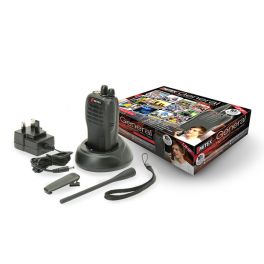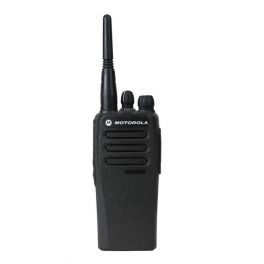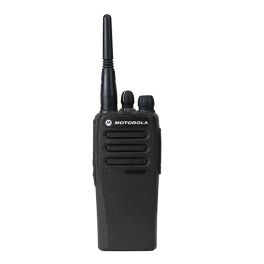
Analogue Radios
- Ref: MITGENUKCompare
- Ref: MODP1400UHFCompare
- Ref: MODP1400VHFCompare
Operating radios VHF / UHF that require a license : Enjoy outstanding range and secure communication!
Why Choose a Licensed Walkie Talkie?
UHF/VHF walkie-talkies , known as "licensed", are distinct from unlicensed devices (PMR446) which are the most common on the market. Their costs are significantly higher. So what are the benefits for a professional choosing a licensed radio over a consumer radio?
• 100% Secure Communications: In order to use a licensed walkie-talkie, the user must apply and pay for a subscription - often annual. With this subscription, he not only gets the right to use the device, but also other advantages: in return, you will be assigned a unique frequency in particular. You are then the only one using this frequency (unlike PMR446 talkies), no one can overhear you. Your exchanges are confidential, which is ideal if you work in a profession where information is considered sensitive, e.g. B. in the field of security, police or industry.
• A longer range: While the range of an unlicensed device is limited to a few kilometers, the range of a VHF-UHF radio is much greater due to its transmitting power. The unlicensed walkie-talkie is actually "flanged" to 0.5 watts, while a licensed radio is rated at up to 4W in UHF and 5W in VHF. The range, moreover, does not depend on its model but on the license to which you have subscribed if you have indicated the area that you must cover. This type of device is therefore often referred to as "Long Range Walkie-Talkie".
• Highly professional features: protection of the isolated worker, patrol control, receiving live alarms, intercom, answering a switchboard... Here are some of the functionalities offered by these walkie-talkies that will make your daily work easier.
• A great robustness: licensed radios are much more durable than unlicensed models, making them ideal for demanding work environments. You are e.g. B. Resistant to bumps and falls, dust and liquids (rain, water jets, temporary or prolonged immersion). To prove their robustness, the different models are certified according to military standards and a protection index that indicates the level of water resistance of the device.
Which walkie talkie should I choose: VHF or UHF ?
• VHF: for open communication areas: The VHF (Very High Frequency) walkie-talkie, on the other hand, enables communication over longer distances in open fields or, for example on a lake or at sea. Its battery life is usually longer, which saves money. For this reason, for large installations, it's best to switch to VHF radios instead, as they're cheaper and usually perform well
• UHF: for places with obstructions: A UHF radio occupies a larger frequency spectrum (from 300 MHz to 3 GHz) than a VHF radio (from 30 MHz to 300 MHz), where UHF stands for "Ultra High Frequency". What does that mean in concrete terms? Its powerful waves penetrate more easily in areas with many obstacles, such as B. in cities, and there is less risk of interference when other devices are present. On the other hand, UHF waves are shorter, so they are less suitable for long distances. Their cost is higher because the manufacturing process is more complex and the UHF components are more expensive.
Digital vs Analogue Radios
Traditionally, analogue radios have provided reliable communication between team members, but digital radio has far expanded the capabilities of two-way voice communications. Digital radios provide superior voice quality at the reaches of coverage areas, double the capacity of an existing 12.5 kHz channel and up to 40% longer battery life on a single charge.
Digital Radios offer many benefits vs. analog radios. Here’s a few:
- Better Voice Quality - Automatic error correction capabilities maintain the clarity of voice, even with background noise or a corrupted signal. Speech is digitally encoded, which means advanced algorithms can deliver clear voice in extreme conditions.
- Greater Capacity - Exceptional bandwidth far outreaches what analog can offer. In fact, it’s so efficient, it allows you to double the capacity of your existing 12.5kHz channel which can lower your licensing costs.
- Stronger Coverage - Digital performs better even at the far edges of coverage. Built-in error correction helps eliminate the static, background noise, and voice distortion that can occur with analog radios as you reach the limits of coverage.
- Longer Battery Life - While battery life is a challenge for all mobile devices, digital technology is much more efficient. Digital radios provide up to 40% longer battery life allowing users the ability to communicate the entire day without needing to recharge.


